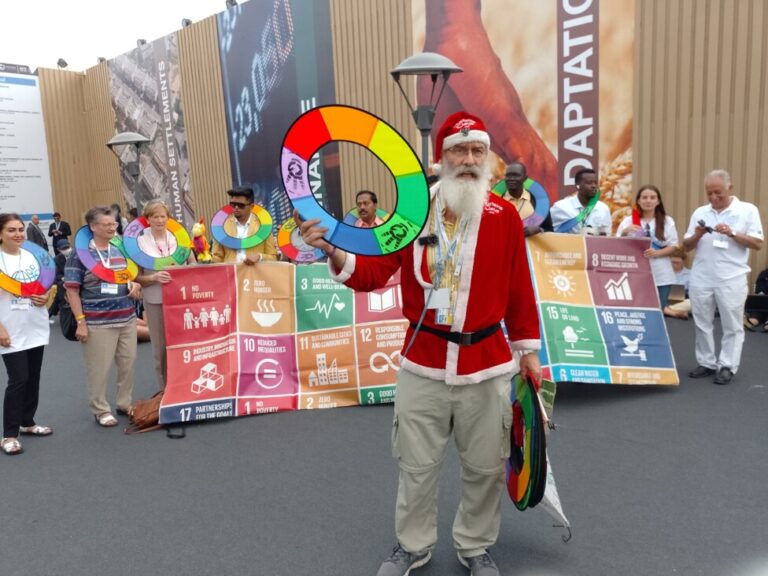Image: Shutterstock
NEW YORK, Nov 17 (IPS) – Small states take the path less travelled. They face challenges unfamiliar to many: scarce resources, smaller economies and the real impact of climate change.
However, small states are also able to leverage assets in ways that large states often cannot. As an example, Singapore has learned how innovation and digital can accelerate development.
Small states are not passive actors in traditional development or innovation trajectories. They have exciting power and agency to steer innovation in new directions.
This includes forging a new age of global innovation leadership – defining and setting global standards and innovation priorities, and shaping a small states comparative advantage in the context of innovation.
Technological innovation is founded on policy innovation
Innovation does not operate in a vacuum, and governance is a key catalyst. This includes exploring how governance structures and processes can identify, implement and scale innovation.
There is a growing need to craft systems, cultures, and infrastructure that not only embrace innovation but become part of it. Governments can ensure that new technologies engage with local priorities — and shape global solutions which fill these gaps.
This is not a destination but a journey; it is about creating environments for continued innovation.
Governance needs to be responsive to the constant evolution of technologies. Some examples of such agile governance include regulatory sandboxes, outcome-based regulations, and testbeds for global innovators (though small states must not ‘just’ test innovations but co-design them too).
Agility also comes from data-driven innovating and data innovation. Here, governments can shape both foundational data infrastructure, but also leverage data to accelerate innovation – through initiatives such as the UNDP SIDS Data Platform. Such insights can then become part of ‘feedback loops’ to inform policy and service design.
We need to focus on outcomes, not solutions
There is a need to shift priorities towards the positive outcomes of innovation – whether driven by frontier technologies or frugal innovations, communities and entrepreneurs or corporations and governments. Each configuration leads to greater success in different contexts, and reaffirms why we need to be led by problems and not solutions.
Small states share unique challenges which do not necessarily respond to established technological ‘answers’, and there are wider positive multipliers which emerge when innovating for these challenges.
Small states again have the advantage of size; coordination can be faster, and enterprises may more easily work in tandem with governments to harmonize innovation priorities.
Particularly important is indeed recognizing that innovation cannot be delivered by government alone. The private sector plays a particularly fundamental role – including the smaller enterprises.
The COVID-19 pandemic has turbocharged digitalization and many entities now recognize that they can no longer do business in the traditional way.
In Singapore, this shift has been accompanied by a focus on building baseline adoption of digital tools through the ‘CTO-as-a-service’ platform under the ‘SMEs Go Digital Programme’. Since 2017, over 80,000 small and medium-sized enterprises have adopted digital solutions under the programme.
We need to build and strengthen local efforts and small state capacity
Innovation must be led and owned by local people — and this begins with human capital development. Brain drain is an immense struggle for small states, and tackling this is an imperative for governments.
Small states should look to shape robust curricula across local schools for young people, as well as develop advanced STEM offerings to encourage innovators to contribute to their home countries.
For example, Singapore’s TechSkills Accelerator Initiative has supported over 7,000 companies to hire, train and retain technology talent. It has placed more than 12,000 Singaporeans in technology roles, whilst an accompanying framework supports businesses in hiring global talent with in-demand skills.
At the same time, innovation is not a product of financial investment or discrete initiatives alone; it emerges out of complex interactions between the public and private sector, shaped by institutional frameworks to go with the above human capacity development, research and development, and business support.
Singapore’s national platform for digital innovation, the Open Innovation Platform, provides professional consultancy support to help companies diagnose business challenges, define problem statements and crowdsource solutions from 12,000 solution providers from the private sector.
The government also plays an active role to support startups in their growth stage. Through the [email protected] and SGD Spark programmes, organizations are provided third-party assurance on a startup’s ability to deliver on their products and outcomes, as well as connecting them to government and business demand.
Innovation is not optional for small states
The challenges faced by small states are matched by the potential that innovation and digital technology can offer. And part of this is the role and importance of learning from each other.
The Singapore Cooperation Programme (SCP) extends technical assistance and shares Singapore’s development experience with fellow developing countries. In its 30th year in 2022, the SCP has welcomed close to 150,000 foreign government officials to its programmes.
In 2021, Singapore launched the “FOSS for Good” technical assistance package to address small states’ unique development priorities – including digital transformation in the areas of health, education and public governance. UNDP has been an important partner in this programme.
Such shared learning and collaboration opportunities, combined with the wide-ranging support of initiatives such as the UNDP Global SIDS Offer, will be crucial to ensure that small states build and sustain global innovation leadership.
Both in the face of continued shocks and crises, but also to leverage opportunities where innovation can positively change lives and livelihoods.
William Tan, Director-General, Technical Cooperation Directorate, Ministry of Foreign Affairs, Singapore & Riad Meddeb is Interim Director, UNDP Global Centre for Technology, Innovation and Sustainable Development
Source: UNDP
IPS UN Bureau
Follow @IPSNewsUNBureau
Follow IPS News UN Bureau on Instagram
© Inter Press Service (2022) — All Rights ReservedOriginal source: Inter Press Service
Check out our Latest News and Follow us at Facebook
Original Source
